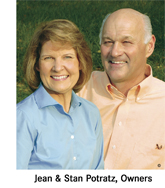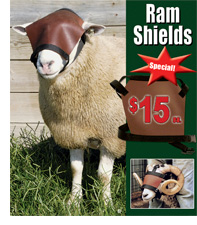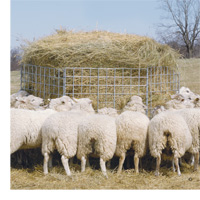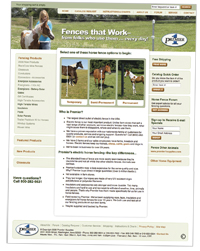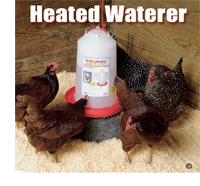Message from the Owner
Lamb production—USA vs New Zealand: an analysisLast month Premier hosted a tour of New Zealand for US sheep farmers and ranchers. The most memorable stop for me? Campbell Tuer's farm on the Canterbury Plains. Why? He runs 3000 ewes from which he sells 5000 lambs at 75 lbs live weight from 1100 acres relying only on part-time help from his wife (for labor other than shearing). That, folks, is efficient use of labor and land. (I am not making up the figures, though I can understand why you might assume otherwise.) Let's examine the key reasons for their efficiency.
Those are the core factors. Lessons for the US folks? We can't change our predators or our soil or our climate. Those of us who must conserve feed in the summer and feed in the winter must go on doing so. But we can change our livestock genetics and our production systems to match our particular ranch or farm. That's our focus at Premier. Best wishes for you all through this holiday season. Don't let the economic news get you down. Better times are ahead. by Stan Potratz, Owner Special Price from Premier!
$15 Ram Shield(Remember: FREE SHIPPING on qualified A leather mask that blocks the ram's forward vision. This prevents rams from charging humans or other rams. It does not limit side vision. Rams still eat, graze, breed and drink. It's so effective in subduing belligerent rams that it surprises first time "users" (both the ram and the shepherd). Ram Shields (Polled & Horned) - $15 each (was $17) Promo Codes: For phone orders: NEWSE Note: This offer cannot be combined with any other claim codes or offers. However, free shipping on qualified website orders still applies. Order soon! Offer expires December 31, 2008!Premier Tip
Premier's Big Bale Feeder can save you money!With today's high feed costs, now is not the time to feed hay in wasteful feeders. A good feeder will more than pay for itself in one winter. Hay is costing somewhere around .04 -.08 cents per pound. If you are feeding 50 ewes for 120 days and they each waste just one pound per day with an inefficient feeder, the wasted feed will cost you about $360.00. Spending $$ on Premier's Big Bale Feeder should not be considered an expense. Instead, it can make you money. by Gordon Shelangoski, Premier's Sales Consultant View more feeders from Premier What's New
Now Live! - Premier's NEW Horse Fence Websitewww.horsefencesthatwork.com
You can still visit www.premier1supplies.com for all species and products. Premier VIPCutting the fat from your sheep enterpriseby Dan Morrical Harvest season is in full swing with lots of soybeans already harvested in northwest Iowa. Producers may need to consider rolling up some soybean stubble for winter feed or bedding. Although the nutrient content of soybean stubble is not very good, it beats snowballs. The other aspect of putting up some soybean stubble is that with the late harvest in 2008 it may be difficult to get cornstalks baled. I recently ran a year-round feed budget for a set of ewes run in confinement year-round. With cornstalks and condensed distillers solubles fed for 250 days and ad libitum soybean hulls and dry distillers grains with solubles fed for 115 days, the total feed cost was $48.00 per ewe per year. This cost, however, did not account for the labor and the fuel to mix and deliver the rations daily. It was surprising the feed costs could be that low. Costs were set at $30 per ton for cornstalks and CDS and $180 per ton for soybean hulls and dry distillers grains. Use of the two low-cost feeds might be cheaper than grazing on a per ewe per day basis. Cutting items that are critical to the health and production capacity of the ewe flock is not the way to trim fat from the enterprise. One example that I think many operations are making is to not offer salt or mineral to the ewes. This choice last winter resulted in ewes that were excessively licking newborn lambs, resulting in severe injuries to the newborns' ears, tails and even feet. It required over three days of high salt intake to satisfy the ewes craving for salt and stop the excess licking. Ewes that were not the dam of the lambs were involved, with five to six ewes licking newborn lambs. The other extreme of not feeding salt and mineral is to way overfeed salt and mineral. Trace mineral salt should cost around $20 to $25 per hundredweight. Following label directions, ewes should only consume one-quarter to half ounce per head per day. Annually, that equates to 6 pounds per year, which would only cost $1.50 per head. Trace mineral salt feeding is not the place to save on the feed bill. However, if one is feeding more expensive sheep mineral that contains high levels of calcium and phosphorous, then mineral supplementation becomes expensive. If one assumes one ounce intake per day, then the ewes consume 22 pounds per year. Cost of mineral runs roughly double the cost of TM salt, so feeding expensive mineral is four times as costly. In many situations, mineral costs per ewe are exceeding $10 per ewe per year. Reading and following label directions is critical to controlling mineral supplementation costs. Choosing not to ultrasound for fetal counts or lambing date because $3 per head is too expensive is another poor choice in terms of trimming the fat. Culling open ewe lambs alone can cover the cost of scanning. If one assumes the winter feed bill for an open ewe is $30 to $50, then 10% open ewes more than pays for the scanning. Saving on feed by putting late-lambing ewes on the supped up late-gestation ration at the appropriate time is another place to save $1 or $2. With the higher feed costs, many calls are coming in to my office requesting help with ewe rations. Last week a producer who had been feeding two pounds of hay and two pounds of corn to his ewe wanted to switch to cornstalks and dry distillers grains. The only reason not to switch is if one cannot control amount of cornstalks offered per day. Back in the day when cornstalks cost $10 per ton and no one worried about the nutrients being removed from the field, we could waste cornstalks. The first step in controlling cornstalk feeding waste is to use a good large-bale feeder. If equipment exists to feed tub ground cornstalks, that is a much better approach. One can allow the ewe flock access to the cornstalk bales every other day in early-mid gestation. Ewes, because they are real hungry, tend to consume the bales more uniformly with less waste. However, for budgeting purposes I would assume a minimum cornstalk feeding waste at 25% and may be close to 50%. Cheap cornstalks may become expensive feed on a pound-consumed basis. However, the alternative to cornstalks is hay, which currently is $100 for low, low quality big round bales up to $250 per ton for the large squares of third-cutting alfalfa. So cornstalks are not cheap like they were in the old days, but still much cheaper than high-quality hay. Another bad choice that can result in costing more than it saves is the failure to correctly supplement protein to the ewes. Many producers use energy tubs or protein tubs to supplement their ewes. It is easy and it is convenient. However, most ewes have not taken a nutrition course or read a fact sheet on feeding ewes, so they frequently overconsume the expensive nutrient source. The other mistake is that we do not provide protein supplement at all when feeding low quality roughage sources like CRP hay, cornstalks or soybean stubble. Dry distillers grains are currently competitively priced and are an excellent source of both energy and protein for the ewes. Ewes may only need one-half pound per day of DDGS to meet the ewe's protein needs. The cost of DDGS is $180 to $200 per ton or $.09 to $.10 per pound. Protein tubs probably cost double or triple that price per pound. Using tubs is a case of fat that needs to be trimmed from the enterprise. There are not any single magic cuts that will by themselves move the flock into positive income. However, there may be two, three or six items that combined might be enough to move your ewe flock to a positive income basis. The bio-economy is exciting, but it does make feed costs much higher and profitable sheep production much tougher. Doing things the way we always have is no longer acceptable if one wants to stay in the sheep business with black ink instead of red ink. Premier Product
Need Poultry Supplies?"Backyard" poultry is booming. Premier has even started our own operation. To accommodate needs, we continue to identify and add products to assist in this venture. Includes waterers, feeders, heat lamps, etc. View our complete line of poultry products. Premier Employee Spotlight
Fawn Blodgett"I love my job! Premier rocks!" says Fawn Blodgett, this month's featured employee. Fawn has been working in our shipping department for almost a year and says she likes it "because it is fast paced and physical. I am never bored and my job keeps me in shape. I also work with a great crew and that's a plus." What she likes best about Premier, she says, "is how everyone gets along and, when someone needs help, everyone is ready to step in and help you with anything. It is a great atmosphere to work in." Fifteen months ago, Fawn and her family moved to Iowa from Corning, New York, for a reason that may intrigue some folks. They are avid whitetail deer hunters, and they moved here to chase Iowa whitetails. Fawn and her husband, Harry, run an outfitting business called Iowa Trophy Outfitters, providing guided deer and turkey hunts throughout the area. She and her family, who live in Brighton, Iowa, are also avid fishermen and love to ride four-wheelers. Her favorite statement is "Seriously!" One day at work she told our facilities manager that she needed an item from our north warehouse. She needed it desperately for an order, she said, adding, "Seriously!" From that moment on, the word was a joke to him and her co-workers. Fawn has a daughter, Taylor; two stepchildren, Harold and Caitlin; and a puggle puppy named Crockett. RecipeChicken Cheese DipIngredients: 40 oz canned chicken, drained Chunk up the cheeses for easier melting. Mix all ingredients in Crockpot and stir often until cheese is melted. Serve with tortilla chips or crackers. from Julie Cole, Premier employee |


